71 F. high temperature yesterday in the Twin Cities.
74 F. average high on September 10.
68 F. high on September 10, 2014.
.02" rain fell Thursday at MSP International Airport.
September 10, 2002:
A late-season tornado strikes Albertville just after midnight
.According to a damage survey conducted by NWS personnel, it touched
down on the eastern edge of Cedar Creek Golf Course, then it moved
straight east and dissipated in a city park just west of the railroad
tracks. It completely tore the roof off of one home. Roofs were
partially off a number of other homes, many attached garages collapsed,
and a couple of houses were rotated on their foundation. About 20 homes
were damaged, nine of which sustained significant damage.
September 10, 1986: 3 inch hail fell in Watonwan County.
September 10, 1947: Downpour across the Iron Range. Hibbing got 8.6 inches in three hours.
September 10, 1931: St Cloud's high was 106 degrees, while it reached 104 degrees in Minneapolis.
September 10, 1910:
Duluth had the shortest growing season ever with frost free days from
June 14 to September 10 (87days). Normally the frost-free season is 143
days.
Wardrobe Malfunction"We
know that in September we will wander through the warm winds of
summer's wreckage. We will welcome summer's ghost" wrote Henry Rollins.
I'm an unabashed cheerleader for September. I suspect it may be the most
beautiful and underrated month of the year in Minnesota.
Think
about it. The kids are back in school, the lakes are serene, water just
warm enough for one last (quick) dip. No mention of dew point; humidity
levels are trending lower. The risk of encountering a wild thunderstorm
are small. Days are lukewarm, nights "good for sleeping". The atmosphere
is shifting gears, but simmering summer warmth means numerous streaks
of 70s and 80s.
The Super El Nino we're tracking in the Pacific
may be historic, forecast to peak between October and December. The
atmospheric equivalent of an electric blanket, unnaturally warm water
should provide a mild bias thousands of miles downwind, well into
winter.
Most NOAA climate models keep us milder (and wetter) into February. Maybe we'll get the snow without the crippling cold?
Hey, a guy can dream.
We
stay cool and dry into the weekend but 80s return next week. I predict
wardrobe malfunctions: shorts and jackets in the same closet. Why not?
Hints of Cold Fronts To Come.
Good sleeping weather, right? A southward wobble in the jet stream will
flush cool, clean (refreshing!) Canadian air south of the border,
allowing nighttime lows to dip into the 40s. I could see some frost over
the Minnesota Arrowhead the next couple of nights. Graphic: Twin Cities
National Weather Service.
Summer Precipitation Anomalies.
Rainfall since June 1 has been above average over central and southern
Minnesota, as much as 4" wetter than average over western Wisconsin and
far southwest Minnesota. But it was a drier meteorological summer from
Fargo and Moorhead to Bemidji and Duluth. Source: Midwest Regional
Climate Center.
Severe Storm Update.
As of September 10 Minnesota has hosted a total of 24 tornadoes, mostly
small and brief - no monsters this year. That's fewer than average, to
date. A couple of wild squall lines created numerous reports of hail and
damaging winds; 213 separate reports of wind damage so far in 2015.
Source: SPC.
Fresh Front.
NOAA's 12 KM NAM model shows a push of cool, Canadian air reaching the
Upper Midwest, Great Lakes and New England over the next 36 hours; dry
weather predicted for Minnesota into early next week. Enjoy the low dew
points; the first half of next week brings highs in the low 80s with a
noticeable dew point near 60F.
Late September Warming Trend.
The predicted 500 mb jet stream map for Thursday evening, September 24,
looks like something out of mid or late August; the core of prevailing
winds lifting north into Canada, allowing summerlike warmth to sweep
into much of the central and eastern USA. Yes, we will see more 80s, as
early as next week. Source: GrADS:COLA/IGES.
Mother of All El Ninos?
We'll see, but many forecasters believe this year's warm-up of the
Pacific may exceed 1997-98 and 1982-83. Hopefully that will mean a
parade of storms for drought-stricken California and a milder winter,
overall, for Minnesota and much of the USA. We will have winter this
year, but El Nino may take the edge off the worst of the chill. With any
luck no Polar Vortex to point to in a few months.
Milder Bias into December? No,
I wouldn't bet the farm on a 4 month outlook, but NOAA CPC's NMME
climate ensemble continues to show a warmer than average bias for
Minnesota and much of the lower 48 states from October into December, a
cool temperature anomaly for the southern Plains states, symptoms of a
supersized El Nino and a much more active southern branch of the jet
stream. Source: NOAA.
Trending Wetter?
The same NMME climate model ensemble (October into December) shows
wetter than average conditions from the Great Plains to the East Coast; a
continuation of drier than average for much of the western USA, which
is somewhat out of character for a typical El Nino winter. Then again
all El Nino events are different.
Japan Floods: City of Joso Hit By "Unprecedented" Rain.
The BBC reports; here's an excerpt: "...
Television
footage from Joso in Ibaraki showed people clinging to the rooftops
before helicopter rescue teams winched them to safety. Entire homes and
cars were carried away on the torrent as the Kinugawa River burst its
banks after two days of heavy rainfall. The flood waters reached as far
as 8km (5 miles) from the breach. In Tochigi, more than 500mm (19
inches) of rain fell in 24 hours in places, double the amount that
normally falls there throughout the whole of September, according to
Japanese public broadcaster NHK..."
Photo credit above: "
The Kinugawa River in Joso burst its bank on Thursday, flooding homes." AP photo.
The Mothers of All Disasters. The Atlantic
has a sobering look at worst case disaster scenarios. Katrina was a
walk in the park compared to what could happen; here's an excerpt: "...The
biggest disasters seem so far out of the range of the normal
possibilities of daily life that it’s nearly impossible to even envision
the scale of the destruction and upheaval, even for people who have
survived one. Huge hurricanes could all but wash major cities away.
Earthquakes on the West Coast and even in the center of the country
could knock out power for months, make running water a distant memory,
and deprive residents of the roofs over their heads. A deadly epidemic,
such as the U.S. hasn’t seen in 97 years, could take the lives of tens
of thousands. A terrorist could unleash an improvised nuclear device in a
major city, killing thousands—an event without historical precedent.
The people who try to keep the nation ready for these doomsday scenarios
call them the Maximums of Maximums, or the MOMs..."
Illustration credit: Tom Reichner / Bonita R. Cheshier / Dustie / Leonard Zhukovsky / Shutterstock / Reuters / Zak Bickel / The Atlantic.
More Coastal Nuisance Flooding Forecast for Coming Months.
AP has the details on how El Nino and higher sea levels may contribute to flooding into spring of 2016; here's the intro: "
Federal
scientists said Wednesday they expect nuisance flooding to increase in
many places along the nation's coasts in coming months. A combination of
sea level rise from human caused global warming and the giant El Nino
will likely combine to increase the type of minor street flooding that
causes much inconvenience but no major damage, according to the National
Oceanic and Atmospheric Administration. In 10 of the 27 coastal
communities that NOAA examined, scientists predict the number of
nuisance flood days to increase 33 to 125 percent with the current large
El Nino. And it's likely to be the worst in the Mid-Atlantic region
where nuisance floods could happen about once a week from New Jersey to
North Carolina. The nuisance flood season runs mostly from fall to early
spring..." (File photo: AP).

El Nino Impacts on Nuisance Flooding. Here's an excerpt of an interview at
NOAA's climate.gov: "...
El
Niño will likely increase the frequency of nuisance flooding days on
both the East and West coasts by anywhere from 25% to 125% compared to
the baseline number of days that would be expected based on recent rates
and long-term trends...During El Niño,
warmer than average surface waters and higher than normal sea levels
persist along the U.S. West Coast. These higher sea levels set the stage
for typical "king tides" and normal winter storms to have a bigger
impact than usual. Along the East Coast, El Niño-related atmospheric "teleconnections" help establish a more zonal (west-to-east) jet stream and storm track, which results in higher-than-normal storm surge frequencies along much of the Mid-Atlantic Coast (see related research by Sweet and Zervas, 2011). As a result, historically both the West and East Coasts experience more nuisance-level flooding during stronger El Niños..."
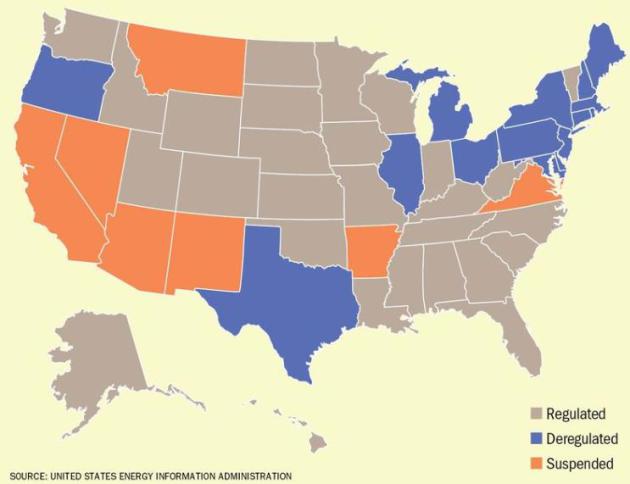
Power Utilities Are Built for the 20th Century. That's Why They're Flailing in the 21st.
Vox
has an interesting story about the economics and monopolistic power of
utilities, and how that may not make much sense going forward. Here's an
excerpt: "...
Utility regulations haven't changed much in the past
decade. But technology has. On the generation side, the pressures that
began facing big baseload coal and nuclear plants in the 1990s have only
grown more intense, as natural gas gets cheaper and is joined by wind
and solar. Meanwhile, regulatory mandates at the state and federal
level, sophisticated demand management, and larger economic shifts have
meant that ever-expanding demand — a key premise of the early regulatory
model — has finally plateaued and even begun to fall. There is no
longer any need for a stampede of new power plants. Economies of scale
are no longer the overriding influence in electricity markets. But
perhaps most importantly, there has been a remarkable surge of
innovation at the "distribution edge,"
which includes the interface between the grid and the customer and
everything "behind the meter," where customers manage and use
electricity..."
Spygate to Deflategate: Inside What Split the NFL and New England Patriots Apart. Here's an excerpt of an interesting article at
ESPN: "...
Interviews
by ESPN The Magazine and Outside the Lines with more than 90 league
officials, owners, team executives and coaches, current and former
Patriots coaches, staffers and players, and reviews of previously
undisclosed private notes from key meetings, show that Spygate is the
centerpiece of a long, secret history between Goodell's NFL, which
declined comment for this story, and Kraft's Patriots. The diametrically
opposed way the inquiries were managed by Goodell -- and, more
importantly, perceived by his bosses -- reveals much about how and why
NFL punishment is often dispensed..." (ESPN illustration above).
Giant Prehistoric Viruses Could Be Awakened by Oil Drilling in Siberian Permafrost. Don't sweat the thundershowers.
VICE News has the details; here's the intro:
"French
scientists have announced the discovery of a giant 30,000-year-old
virus, which was found buried 100 feet deep in the Siberian permafrost —
a thick layer of soil that remains frozen year-round. Mollivirus
Sibericum — "soft virus from Siberia"
— measures 0.6 micrometers, which means that, unlike normal virus
specimens, it can be observed under a regular microscope. Viruses larger
than 0.2 micrometers in diameter are considered "giant" viruses..."
Image credit above: IGS CNRS/AMU. More perspective from
Popular Science.
Futurists Predict What Boomers Will Live To See.
Next Avenue
has a hopeful, optimistic vision of the near future. A brain similar to
what I enjoyed in my 20s? Be careful what you wish for. Here's an
excerpt: "...
Goonan thinks there’s a good chance that boomers will live significantly longer than expected, based on “what we’re learning about longevity
and our increasing ability to respond rapidly to trauma.” And, she
added, “because this is the ‘Century of the Brain,’ it seems likely that
information garnered by the U.S.’s BRAIN initiative and the European
Big Brain Project will lead to a new understanding of how learning
occurs and how we can harness neuroplasticity to all be as smart as we
were in our 20s..."
File image above: Thinkstock.
Apple's iPhone Keeps Going Its Own Way. Will the iPhone ever become a commodity? Here's an excerpt from
The New York Times: "...
In
many fundamental ways, the iPhone breaks the rules of business,
especially the rules of the tech business. Those rules have more or less
always held that hardware devices keep getting cheaper and less
profitable over time. That happens because hardware is easy to
commoditize; what seems magical today is widely copied and becomes
commonplace tomorrow. It happened in personal computers; it happened in
servers; it happened in cameras, music players, and — despite Apple’s
best efforts — it may be happening in tablets.In fact, commoditization
has wreaked havoc in the smartphone business — just not for Apple..."
TODAY: Cool, fresh sunshine. Winds: NW 10-15. High: 64
FRIDAY NIGHT: Clear and comfortably cool. Low: 44
SATURDAY: Chilly start, bright sun. Winds: NW 5-10. High: near 70
SUNDAY: Sunny and warmer. Winds: S 10-20. Wake-up: 50. High: 77
MONDAY: Partly sunny, July-like. Wake-up: 58. High: 82
TUESDAY: Hazy sun, sticky again. Wake-up: 61. High: 84
WEDNESDAY: Humid, few T-storms. Wake-up: 63. High: near 80
THURSDAY: T-storms, then gradual clearing. Wake-up: 61. High: 78
Climate Stories....
Earth's Ice Is Melting Much Faster Than Predicted. Here's Why That's Worrying. If
anything climate models have been conservative, underestimating the
rate of melting in Greenland and Antarctica, as Jason Box explains at
Huffington Post: "...
Glaciologists became oceanographers when they realized, in 2008, the trigger effect for galloping glaciers was warm pulses
of subtropical waters that undermine glaciers at great depth in the
sea, at the grounding lines where this warm water can invade. Indeed,
ocean warming is arguably the climate change story. The planetary energy
imbalance due to the enhanced greenhouse effect is loading far more heat into the oceans than the atmosphere or land. The world is 70 percent ocean-covered after all. While there were signs of a warming hiatus in air temperatures from 1998 to 2012, the ocean continued to heat up,
an equivalent of four Hiroshima bombs, per second, all day, every day.
The increase is continuing as we load the atmosphere with CO2..."
The Simple Statistic That Perfectly Captures What Climate Change Means.
The ratio of record highs to record lows is out of whack, worldwide.
New research from Australia shows that gap widening. Another fluke?
Here's an excerpt from Chris Mooney at
The Washington Post: "...
Lewis
and King looked at how often Australia set hot and cold temperature
records from the year 1910 through 2014. They only considered
temperature records across the country as a whole and in each of its
states or territories (except Tasmania), and only examined monthly,
seasonal and annual records. Thus, the study did not examine daily
records or records in individual locations. (This was in part to avoid
problems introduced by the fact that over time, the number of individual
temperature recording stations changes.) Sure enough, the study found
that from 1910 to 1960, the ratio of hot to cold records was close to 1
to 1. From 1960 to 2014, however, that changed, as hot records started
to happen much more frequently than cold records — and from 2000 to
2014, outnumbered them by more than 12 to 1..."
Image credit above: "
Land surface temperature anomalies for Australia from January 1–8, 2013." (NASA)
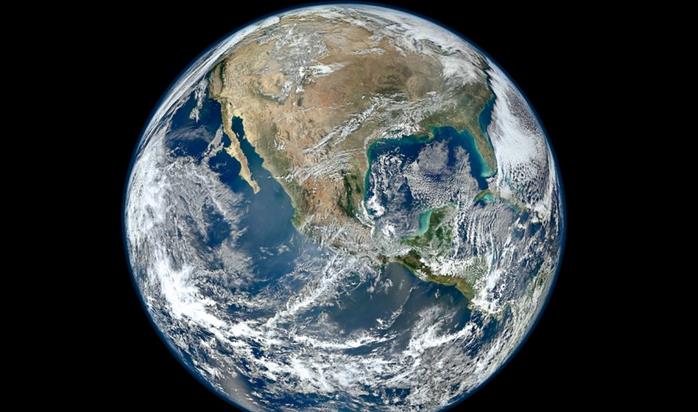 Moral Case To Tackle Climate Change Overwhelming, Says Lord Stern. Here's a clip from an article at The Guardian: "...Speaking
at an international meeting in Rome on environmental justice and
climate change attended by senior Vatican officials, Stern said that the
“moral arguments” for action to combat climate change were
overwhelming. “Discounting future welfare or lives means weighting the
welfare of lives of future people lower than lives now, irrespective of
consumption and income levels, purely because their lives lie in the
future,” he said. “This is discrimination by date of birth, and is
unacceptable when viewed alongside notions of rights and justice
Moral Case To Tackle Climate Change Overwhelming, Says Lord Stern. Here's a clip from an article at The Guardian: "...Speaking
at an international meeting in Rome on environmental justice and
climate change attended by senior Vatican officials, Stern said that the
“moral arguments” for action to combat climate change were
overwhelming. “Discounting future welfare or lives means weighting the
welfare of lives of future people lower than lives now, irrespective of
consumption and income levels, purely because their lives lie in the
future,” he said. “This is discrimination by date of birth, and is
unacceptable when viewed alongside notions of rights and justice...”
How Climate Change Deniers Sound to Normal People. Kudos to Girl Pants Productions for a funny and effective video at YouTube: "In
light of the recent Primary cycle, climate change has been a topic of
hot contention. Right Wing candidates typically take a stance of denial,
especially the more extreme. This is how they sound to the rest of us."
The Sunniest Climate Change Story You've Ever Read. New York Magazine
has an optimistic look at where things stand, and whether we will find
the will to accelerate into a clean energy future; here's an excerpt:
"...
The cost of transitioning away from
fossil fuels, measured as a share of the economy, may amount to a
fraction of the cost of defeating the Axis powers. Rather, it is the
politics that have proved so fiendish. Fighting a war is relatively
straightforward: You spend all the money you can to build a giant
military and send it off to do battle. Climate change is a problem that
politics is almost designed not to solve. Its costs lie mostly in the
distant future, whereas politics is built to respond to immediate
conditions. (And of the wonders the internet has brought us, a
lengthening of mental time horizons is not among them.) Its solution
requires coordination not of a handful of allies but of scores of
countries with wildly disparate economies and political structures..."

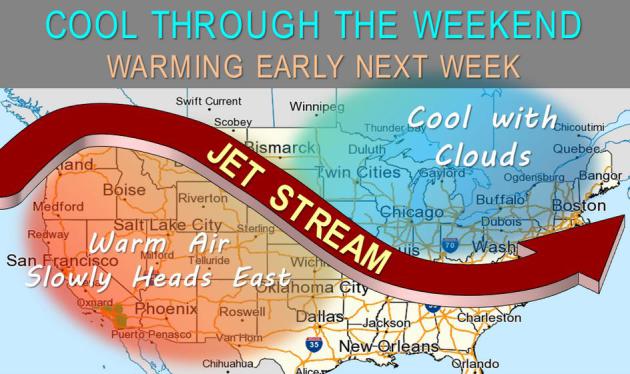
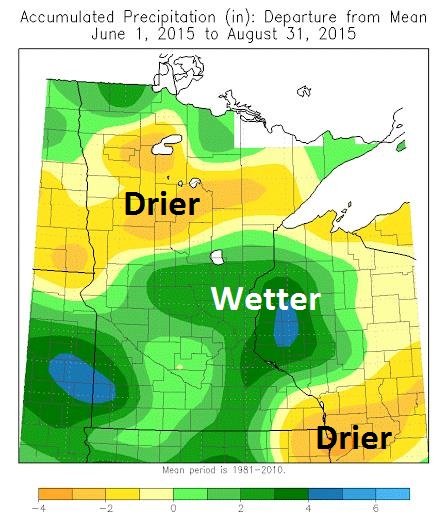


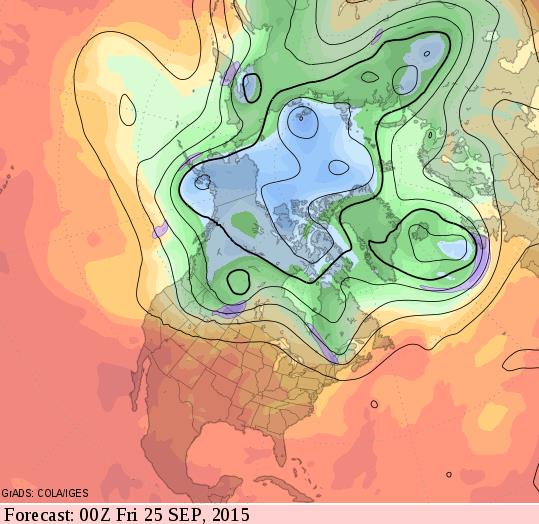




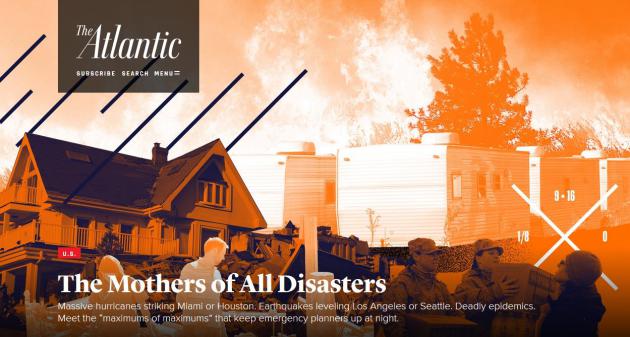
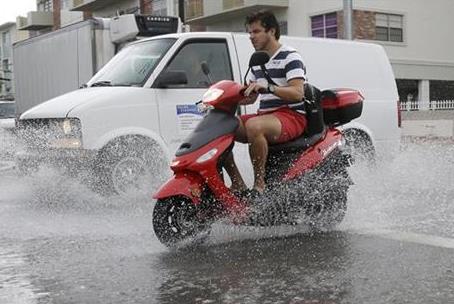








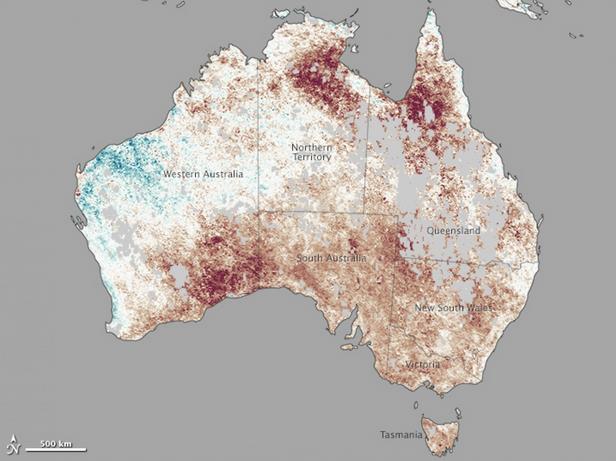



I love reading the interesting links to thoughtful articles that expand my horizons on what's possible. Keep those articles coming. My world would not be nearly as interesting without them. I love your posts, Paul.
ReplyDelete